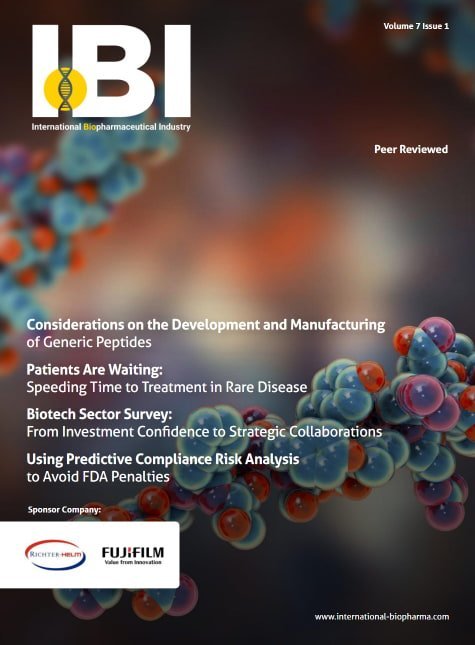The gene therapy field made significant strides this year, and 2020 looks set to bring further advances, particularly as a three-way race to develop a hemophilia A gene therapy progresses.
BioMarin Pharmaceutical, Spark Therapeutics and Sangamo Therapeutics are all developing gene therapies for hemophilia A, the inherited disorder characterized by frequent bleeding episodes due to the lack of an essential blood-clotting protein.
While drug candidates from all three biotechs are currently in clinical testing, each is in a distinctly different spot as the companies head into 2020. Here’s an overview of how the hemophilia gene therapy space is shaping up and what to watch for over the next 12 months.
BioMarin in pole position
BioMarin is well-positioned to be first to market with a gene therapy known as valrox, short for valoctocogene roxaparvovec.
The San Rafael, California-based biotech reported interim Phase 3 results from 16 patients in May, and stated it would file for accelerated approval with the Food and Drug Administration by year end. Since then, BioMarin executives have reiterated that regulatory timeline.
Yet even as BioMarin nears an FDA submission, clinical questions still surround valrox.
Interim Phase 3 data fell short of an earlier trial, leading company executives to blame a difference in timing of steroid use. In the prior study, steroids were typically given to study participants three weeks after infusion, while the Phase 3 trial prescribed steroid treatment after 10 weeks.
And three-year follow-up data from that Phase 1/2 trial showed patient levels of the Factor VIII clotting protein declined over time, raising questions on the product’s long-term durability.
That sets up 2020 as the potential year for valrox’s approval and launch, which could make it the third or fourth gene therapy for an inherited disease to reach market.
If that occurs, BioMarin will face an important decision on setting valrox’s price. Unlike Novartis’ Zolgensma, a gene therapy for spinal muscular atrophy that launched this year with a $2.1 million price, hemophilia patients have a range of existing treatments that are used to manage and control their disease.
Particularly if the therapy’s price falls in the seven figures, payers could very well push back and negotiate. Concepts such as installment payment plans or outcome-based arrangements have floated as options around by gene therapy companies but remain incremental changes to a system still geared toward chronic therapy.
BioMarin also plans to present four-year follow-up data from the Phase 1/2 study in mid-2020 and Phase 3 data on reducing annual bleed rates in the fourth quarter of 2020 or first quarter of 2021.
In the dark on Spark
At least publicly, Spark has gone quiet on how it’s hemophilia candidate is progressing. The Philadelphia-based biotech stopped providing updates on its clinical testing since announcing a deal in February to be acquired by Roche. But that $4.8 billion acquisition has been held up for months by the Federal Trade Commission.
A portion of that scrutiny is presumably over Roche acquiring a gene therapy candidate while also marketing Hemlibra, a prophylaxis factor treatment first approved in 2017. Hemlibra has quickly become a key drug for the Swiss pharma, recording $930 million in sales through the first nine months of 2019.
As FTC mulls the deal, Spark has pushed off sharing interim updates on its gene therapy SPK-8001. While company slides presented at the beginning of 2019 showed plans for a midyear update, that never materialized.
“The guidance we provided about a hemophilia A update in mid-2019 was made prior to the announcement of the pending Roche acquisition,” a Roche spokesperson wrote to BioPharma Dive in July. “We have no further comment at this time while we focus on completing the transaction.”
In the months since, the biotech has stayed quiet. The latest clinical update is more than a year old, with a data cut-off of Nov. 2, 2018 for its Phase 1/2 trial. Those results included 12 patients, with seven tested at the high dose.
While most patients stopped suffering from bleeds and needing infusions, one patient treated with SPK-8001 was hospitalized and needed adrenocortical steroids. Spark stated it planned to include prophylactic steroids going forward in testing.
Spark has started a run-in study for the Phase 3 program, the company disclosed in its first quarter financial filing. While the company has not clarified where that program now stands, a federal database of clinical trials shows the lead-in study actively recruiting for 55 patients with a completion date of July 2020.
Could Sangamo be a wild card?
Sangamo has been the wild card in the race with impressive, albeit early, efficacy and safety data.
Early results from a Phase 1/2 trial turned heads in April by showing a small handful of patients treated with SB-525 had normal Factor VIII activity levels six weeks after treatment. And a further update in July backed that result up, showing more patients sustaining normal levels of the essential blood-clotting protein, so far at least.























